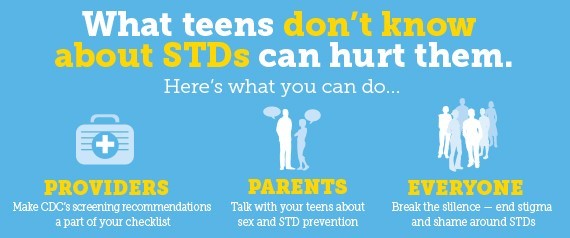Nearly 20 million new sexually-transmitted diseases are estimated to occur every year in this country, half among young people between the ages of 15 to 24. As parents, health care providers and policy makers, this isn't something we can ignore.
CDC's latest national STD report, released today, makes it clear that young people continue to bear the brunt of America's STD epidemic, revealing far higher rates of chlamydia and gonorrhea than any other age group. These two infections alone accounted for more than 1.1 million diagnoses in young men and women aged 15-24 in 2013 -- and we know this represents only about half of the chlamydia infections and a third of gonorrhea infections that actually occurred.
Chlamydia and gonorrhea are not only preventable, they are also curable. However, many infections go undetected or simply ignored, in part because they often have few or no symptoms. But if left untreated, STDs can do irreparable harm. As a result of undiagnosed STDs, like chlamydia and gonorrhea, every year more than 24,000 American women become infertile, silently stealing a young woman's chance to become pregnant.
It doesn't have to be this way. Health care providers can quickly and easily diagnose most STDs through a physical exam, a urine sample or a simple cotton swab. Once diagnosed, both chlamydia and gonorrhea can be treated and cured with antibiotics.
And, once cured, the STD can't be passed on to anyone else. This means that diagnosing infections -- and diagnosing them early -- is key to protecting the health of the individual and their partner. It is also a key factor in preventing new infections and stopping the STD epidemic in its tracks.
That's why all sexually-active young women under the age of 25 should get screened for chlamydia and gonorrhea every year. Unfortunately, we still have a long way to go to ensure these recommendations are fully realized -- it's estimated that only 40 percent of sexually active young women are screened for chlamydia as advised.
To increase testing, CDC works to ensure that health departments, health care providers, and young people themselves have the information and resources they need. But we all need to do more to ensure young people can and do access affordable, confidential STD prevention and treatment services. For example:
- Parents can make sure teens have the information they need to protect themselves and are seeing a doctor who provides appropriate health care. Honest and open communication between parents and their teenage son or daughter about sex, relationships, and STD prevention can have a strong influence on a young person's risk behaviors.
- STD screening should be a standard part of the physician's checklist for young people. Don't wait for your patients to ask for a test, or assume that a young person is not sexually active. CDC provides tips and guidance to help health care providers open up the lines of communication with young people about sex and STDs.
- We all need to break the silence that surrounds STDs in our communities -- we should talk about STDs without shame or stigma and help young people understand STD screening is a routine, essential part of taking care of themselves and protecting their future health.
We can remove the barriers that are preventing young Americans from taking advantage of STD testing and treatment services, and protect their health. We can't afford to leave another generation vulnerable to the potentially damaging effects of STDs -- not when the solution is so simple.
